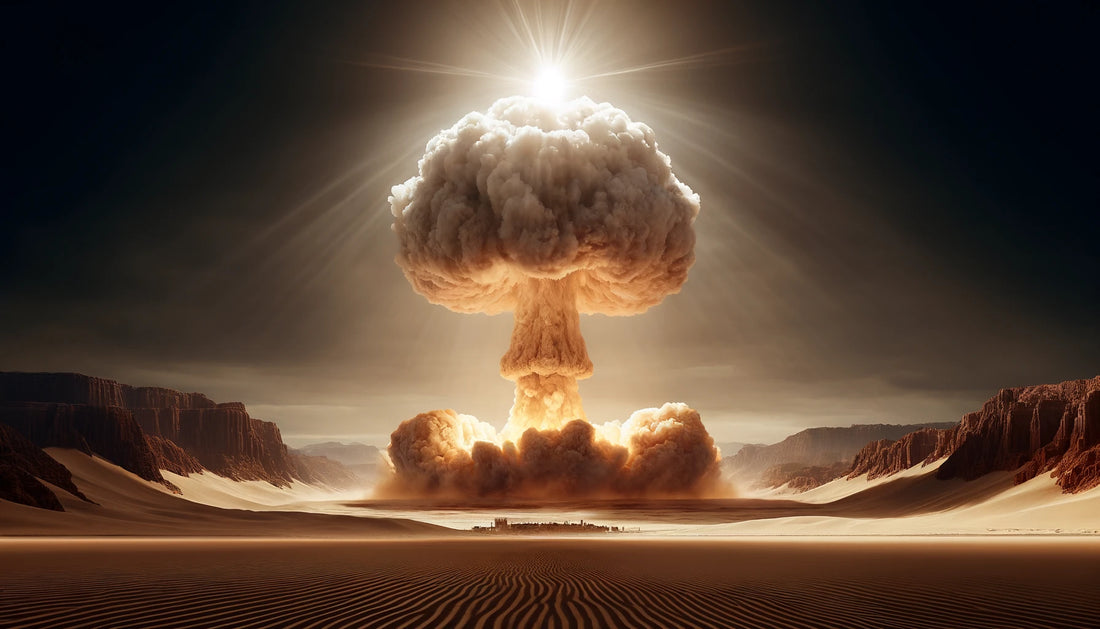 The Manhattan Project: The Dawn of the Atomic Age
The Manhattan Project: The Dawn of the Atomic Age
Introduction:
The Manhattan Project remains one of the most significant scientific undertakings in history. This secret U.S. project, conducted during World War II, was aimed at developing the first nuclear weapons. Here, we explore the key details, figures, and locations that shaped this monumental project, which forever altered the course of global politics and warfare.
Genesis of the Project:
The origins of the Manhattan Project trace back to the early 1940s when fears that Nazi Germany might be developing nuclear weapons prompted prominent physicists like Albert Einstein and Leo Szilard to urge President Franklin D. Roosevelt to initiate a similar program. This resulted in the establishment of the Manhattan Project in 1942, named after the Manhattan Engineer District of the U.S. Army Corps of Engineers in New York.
Key Figures:
- **Robert Oppenheimer**: Known as the "father of the atomic bomb," Oppenheimer was the scientific director of the Manhattan Project. His leadership at Los Alamos, New Mexico, was crucial in steering the complex scientific and technical efforts.
- **General Leslie R. Groves**: As the military head of the project, Groves was instrumental in overseeing the construction and logistical operations necessary for the project's success.
- **Niels Bohr**: A Danish physicist who escaped Nazi-occupied Europe, Bohr significantly contributed to the project by refining the understanding of nuclear fission.
- **Richard Feynman**, **Enrico Fermi**, and **Klaus Fuchs** (the latter later revealed as a Soviet spy) were other notable contributors whose expertise was vital.
Critical Locations:
- **Los Alamos, New Mexico**: The central site for the design and assembly of the nuclear bombs.
- **Oak Ridge, Tennessee**: Home to the uranium enrichment plants that produced the fissile material for the bomb.
- **Hanford Site, Washington**: Where plutonium production took place.
Each site was selected for its remote location and abundant space, essential for security and the project’s massive scale.
-••Buffalo NY•• -Primarily involved in uranium processing. The Linde Air Products plant in Tonawanda, near Buffalo, was used for uranium ore processing. This site was part of a larger effort to develop and refine materials for atomic weapons. The work at Linde involved the extraction of uranium from ore, which was a critical component for the atomic bombs that were eventually developed and deployed.
Milestones and Dates:
- **1942**: Official commencement of the project.
- **December 1942**: The first controlled nuclear chain reaction under the leadership of Enrico Fermi at the University of Chicago.
- **July 16, 1945**: The successful detonation of the first atomic bomb test, codenamed "Trinity," in the New Mexico desert.
- **August 6 and 9, 1945**: The bombs, "Little Boy" and "Fat Man," were dropped on Hiroshima and Nagasaki, respectively, leading to Japan's surrender and the end of World War II.
Ethical and Global Impact:
The Manhattan Project not only marked a significant advancement in science and engineering but also raised profound ethical questions about the use of nuclear weapons. The immediate effects of the bombings were devastating, with massive civilian casualties. The long-term impacts included geopolitical shifts leading to the Cold War and a prolonged global nuclear arms race.
Legacy: Today, the Manhattan Project is remembered through various memorials and museums, such as the National Museum of Nuclear Science & History in Albuquerque and the Manhattan Project National Historical Park, which includes sites in Los Alamos, Oak Ridge, and Hanford. These sites serve as somber reminders of the project's scientific achievement and its harrowing consequences.
#### Conclusion
The Manhattan Project is a pivotal chapter in history that showcases the intersection of scientific innovation and its potential for both creation and destruction. It serves as a critical lesson on the responsibilities that come with technological advancements and the ethical considerations that must guide our future endeavors in science and technology.
If you are wondering why I have focused on blogging about our government history. It feel it is important to know our true history, all of it, including areas by which our government has crossed multiple moral and ethical boundaries. As they say, forget your history and you are bound to repeat it.
monkey out

